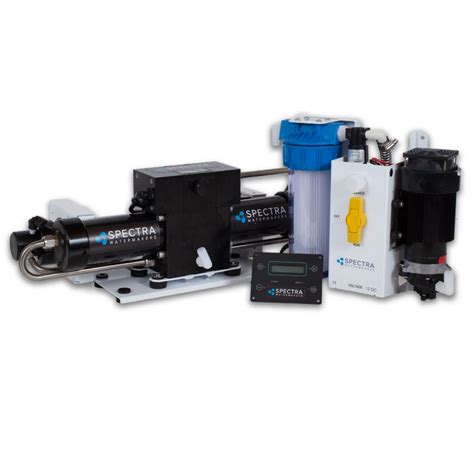Unveiling the Power of Watermakers: Transforming Seawater into Life-Sustaining Water

Unveiling the Power of Watermakers: Transforming Seawater into Life-Sustaining Water
Water is the elixir of life, indispensable for human survival and well-being. However, in many regions around the world, access to clean and safe drinking water remains a daunting challenge. This is where watermakers emerge as a transformative solution, turning seawater into a vital resource for communities, industries, and seafaring vessels.
What is a Watermaker?
A watermaker, also known as a desalination unit, is a device that removes salt and impurities from seawater, producing freshwater. The process typically involves reverse osmosis (RO), a technique that forces seawater through a semipermeable membrane to separate the salt molecules from the water molecules.
The Process of Reverse Osmosis
Reverse osmosis is a three-step process:
* Pretreatment: Seawater is initially filtered to remove any suspended solids or impurities that could damage the RO membrane.
* Pressurization: The filtered seawater is then pressurized using a pump, which forces it through the RO membrane.
* Separation: The RO membrane acts as a barrier, allowing water molecules to pass through while trapping the salt molecules on the other side. The resulting freshwater is collected and stored, while the concentrated salt solution, known as brine, is discharged.
Applications of Watermakers
Watermakers have a wide range of applications:
* Marine Vessels: Watermakers are essential for providing crew and passengers on ships with a reliable source of potable water during long voyages.
* Coastal Communities: In coastal areas with limited access to freshwater, watermakers can provide a cost-effective and sustainable solution for communities.
* Industrial Processes: Many industries, such as food processing and pharmaceuticals, require large amounts of high-quality water. Watermakers can meet these demands, even in remote or water-scarce locations.
* Disaster Relief: During hurricanes, earthquakes, and other natural disasters, watermakers play a crucial role in providing clean water for affected populations.
Benefits of Watermakers
* Sustainable Water Source: Watermakers harness an unlimited resource – seawater – to produce freshwater, reducing reliance on dwindling freshwater sources.
* Improved Health: Access to clean water is essential for good health. Watermakers provide a reliable source of safe drinking water, reducing the risk of waterborne diseases.
* Economic Development: Watermakers empower communities and industries by ensuring a steady supply of water, which is critical for economic growth and development.
Environmental Considerations
* Energy Consumption: Watermakers require energy to operate, primarily to pressurize the seawater. However, advancements in technology have led to more energy-efficient models.
* Concentrated Salt Solution: The byproduct of reverse osmosis is a concentrated salt solution (brine). Proper disposal of brine is essential to prevent environmental harm.
* Maintenance and Servicing: Regular maintenance and servicing are crucial to ensure optimal performance and longevity of watermakers.
Cost Considerations
The cost of a watermaker varies depending on its size, capacity, and features. However, it is important to consider the long-term benefits of having a reliable source of freshwater when weighing the investment cost.
Watermaker Market
The global watermaker market is projected to witness steady growth in the coming years. According to a report by Grand View Research, the market size is expected to exceed $5 billion by 2028, driven by increasing demand for clean water in various sectors and regions.
Interesting Case Studies
* Royal Caribbean Cruise Line: The worlds largest cruise line has installed watermakers on its ships to reduce the environmental impact of carrying large amounts of bottled water.
* Remote Island Community: A small island community in the Bahamas was able to establish a sustainable water supply using a community-owned watermaker, eliminating their reliance on imported water.
* Disaster Relief: Watermakers were deployed during the aftermath of Hurricane Maria in Puerto Rico to provide clean water to affected communities.
Conclusion
Watermakers stand as a testament to human ingenuity and innovation, transforming seawater into a life-sustaining resource. They offer a sustainable and cost-effective solution for providing clean water in areas with limited access to freshwater, empowering communities and industries while also contributing to environmental stewardship. By harnessing the power of watermakers, we can unlock the full potential of our oceans and ensure a brighter future for generations to come.
